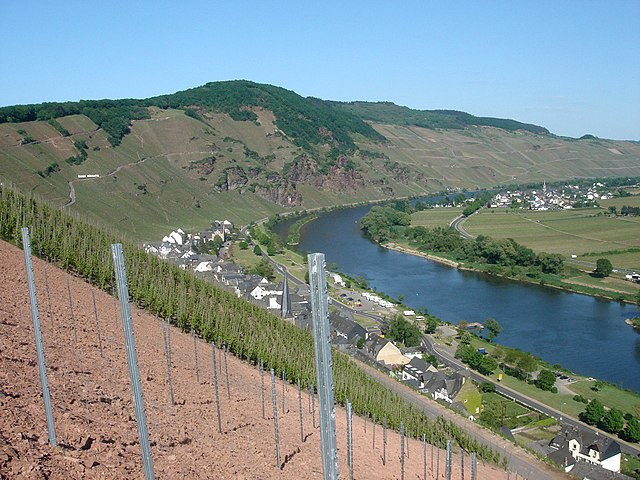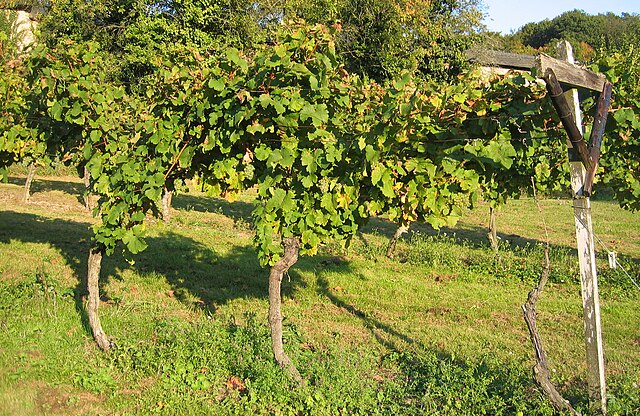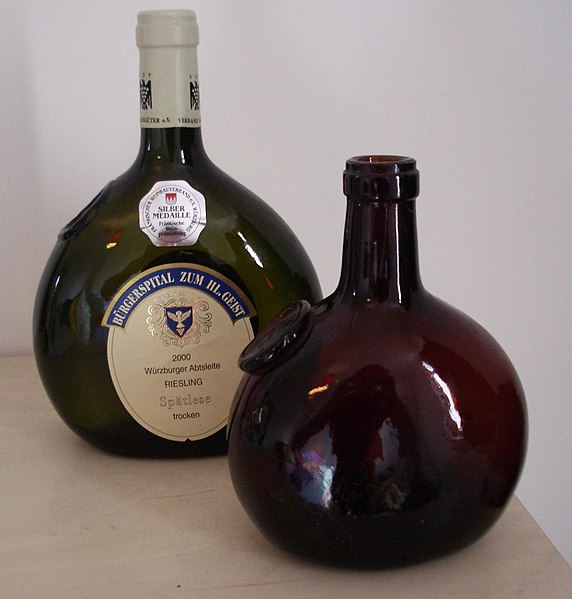German wine classification
The German wine classification system puts a strong emphasis on standardization and factual completeness, and was first implemented by the German Wine Law of 1971. Nearly all of Germany's vineyards are delineated and registered as one of approximately 2,600 Einzellagen, and the produce from any vineyard can be used to make German wine at any quality level, as long as the must weight of the grapes reaches the designated minimum level. As the current German system does not classify vineyards by quality, the measure of wine ’quality’ is the ripeness of the grapes alone.

The bottle on the left displays: Producer (Dr. Loosen) – vintage – village (Bernkastel) and vineyard (Lay) – variety (Riesling) and Prädikat (Eiswein) – mandatory information in small print – alcoholic strength, region (Mosel-Saar-Ruwer) and volume. The bottle on the right uses a slightly different order: Region (Rheingau) and variety (Riesling) – vintage – village (Kiedrich) and vineyard (Gräfenberg) – Prädikat (Auslese) – producer (Weingut Robert Weil) – volume and alcoholic strength.
A Riesling from the Rheingau using the "Feinherb" (off dry) designation
A bottle of Kabinett and a bottle of Kabinett trocken from the same producer and vineyard, showing how the sugar content of the finished wine may be indicated on a German wine label
A bottle of regular Riesling Auslese (left) and a bottle of Riesling Auslese Goldkapsel (Gold capsule) from the same producer
German wine is primarily produced in the west of Germany, along the river Rhine and its tributaries, with the oldest plantations going back to the Roman era. Approximately 60 percent of German wine is produced in the state of Rhineland-Palatinate, where 6 of the 13 regions (Anbaugebiete) for quality wine are situated. Germany has about 103,000 hectares of vineyard, which is around one tenth of the vineyard surface in Spain, France or Italy. The total wine production is usually around 10 million hectoliters annually, corresponding to 1.3 billion bottles, which places Germany as the eighth-largest wine-producing country in the world. White wine accounts for almost two thirds of the total production.

Steep vineyards on Rüdesheimer Berg overlooking the river Rhine. These vineyards are located in the southwestern part of the region Rheingau at a bend in the river. These vineyards are planted with Riesling grapes, with some Spätburgunder (Pinot noir), and produce some of the finest wine in Germany.
Steep vineyards along the Moselle, close to the village Ürzig
Vine trellising according to the Pfälzer Kammertbau system traditional to the Palatinate, where it was widely used until the 18th century. In an all-wooden version (without the steel wires), this system is supposed to date back to Roman times.
German wine from Franken in the characteristic round bottles (Bocksbeutel)








